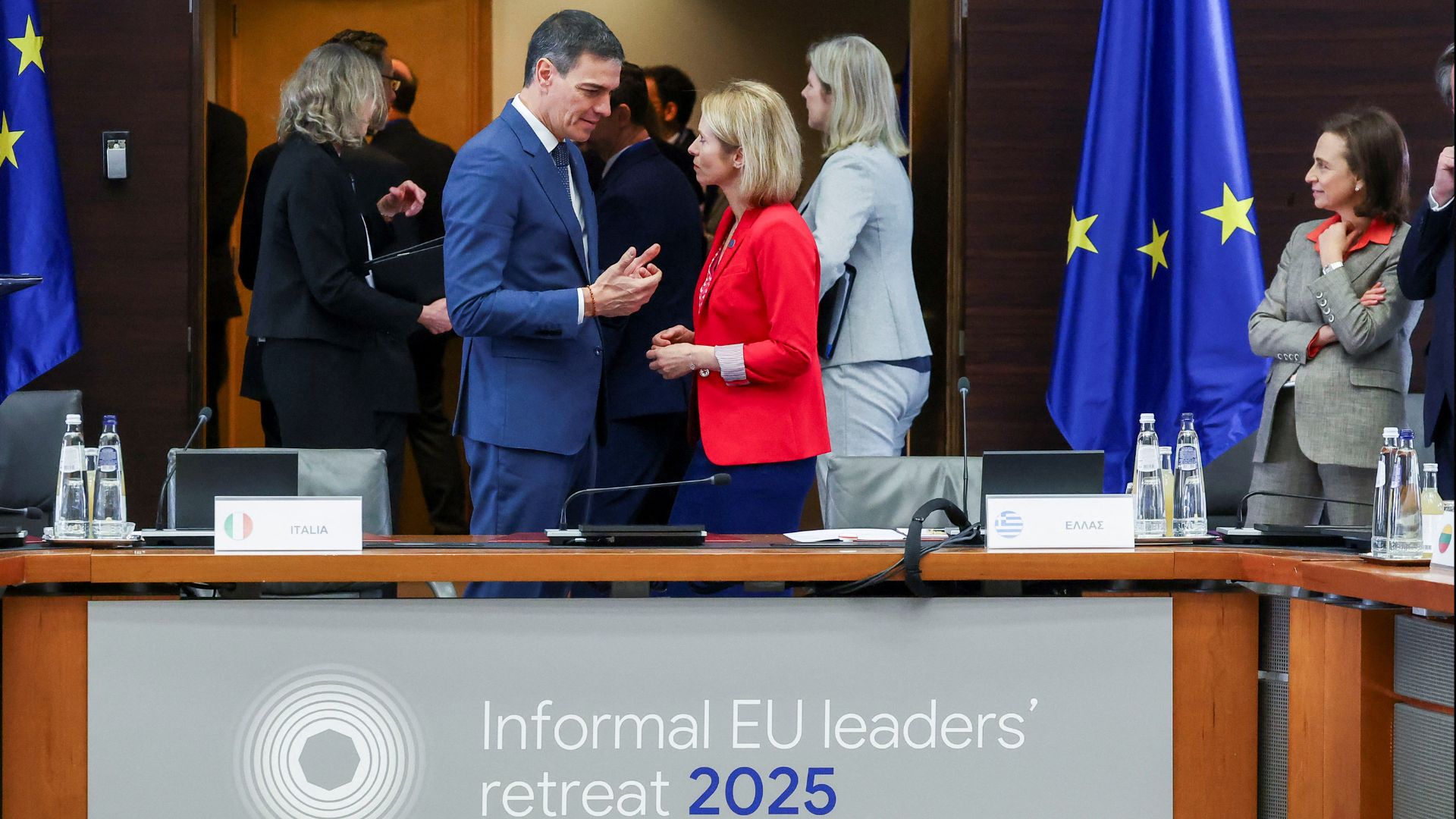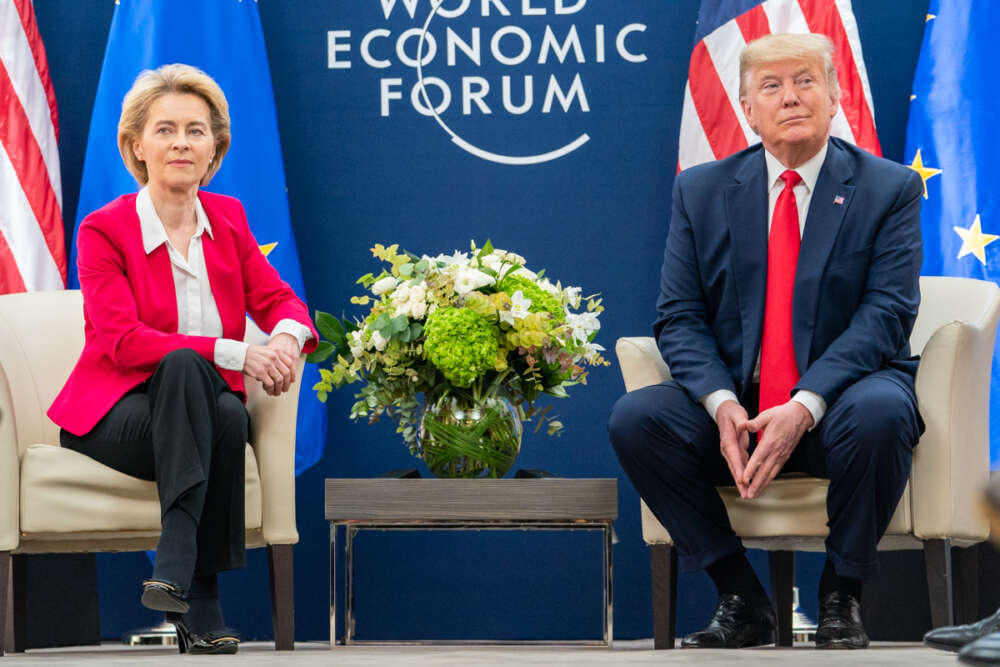Preparing for a Potential Trade Dispute: How the EU Is Moving to Protect Itself

“European companies in the US employ 3.5 million Americans.”
US President Donald Trump’s threats to annex Greenland and impose tariffs dominated a meeting of European Union leaders on defence last week, with the bloc’s leaders threatening retaliation if necessary and warning of a trade war with the US that would destabilise economies on both sides of the Atlantic.
Trump has recently noted that he would target the bloc with additional tariffs because of his country’s large trade deficit with the Europeans.
The EU's 27 member states remain divided between a defensive stance that tends to buy American products, such as liquefied natural gas or weapons, in an attempt to escape a trade dispute with the Trump administration, or a more offensive approach that tends to take potential retaliatory measures.
Trade War
The Financial Times revealed that the EU is planning to take retaliatory measures against the American services sector, especially Silicon Valley, if President Trump goes ahead with his threats to impose tariffs on the bloc’s countries, in the first use of the European deterrent tool known as Bazooka.
The newspaper quoted two officials familiar with the plans as saying that the European Commission is considering using the anti-coercion tool in a potential dispute with Washington, which would allow the EU to target American services sectors, including major tech companies.
A European official said that all options are on the table, explaining that ‘Bazooka’ represents the strongest response that can be taken without violating international law.
The Financial Times explained that this tool, which was designed during Trump’s first term and later used as a deterrent against China, allows the European Commission to impose restrictions on trade in services if a country is found to be using tariffs on goods to pressure the bloc to change its policies.
Officials said that Trump’s threat to use tariffs to force Denmark to hand over Greenland or to pressure the EU to stop taking legal action against US tech companies also falls within this framework.
The tool entered into force in 2023, at which time it allowed the EU to take a wide range of retaliatory measures, such as removing intellectual property protections or commercial exploitation, including software downloads and streaming services.
It also allows for bans on foreign direct investment or restricting market access in areas such as banking, insurance and other financial services.
But another official warned that the EU, despite its skill in dealing with tariffs on goods, may be reluctant to expand the dispute to new areas such as services and intellectual property rights.

US Pressure
Last week, President Trump said he would impose tariffs on the EU, citing Brussels’ actions against US tech companies and its large trade deficit in goods.
Trump did not specify when the measures would be implemented or whether the EU could negotiate to avoid them, as Canada and Mexico have done.
Trump claimed that the trade deficit was about $350 billion, which independent media have since refuted.
According to EU data, the overall trade balance comes to about $53 billion in favor of the EU when considering the US import surplus in services.
Last week, the European commissioner for trade and economic security, Maros Sefcovic, clarified that this balance amounted to about 3% of the €1.5 trillion annual trade volume between the EU and the US.
French President Emmanuel Macron said, “The EU is a power that stands its ground and that if hit with tariffs, the 27-nation bloc would have to make itself respected.”
Danish Prime Minister Mette Frederiksen said: “I will never support the idea of fighting allies. But of course, if the U.S. puts tough terms on Europe, we need a collective and robust response.”
According to assessments made by experts, the EU may be in a good position to respond to US pressure to impose high tariffs on European goods, and the counter-tariffs that the bloc may resort to will hurt the Americans.
Economists warn that tariffs will raise the cost of imported materials used by American manufacturers, raise prices for American consumers, who are already worried about inflation, and reduce global trade flows.
Trump, however, is a firm believer in tariffs, insisting they will boost domestic manufacturing and touting them as a source of revenue.

European Retaliation
On the other hand, European elites are leaning towards pushing for trade arrangements that please President Trump, and negotiating with him rather than getting involved in an open trade war in which everyone would lose.
Some member states have expressed concern about entering a trade war in light of the slowdown in economic growth, while a European diplomat familiar with the discussions said: “We want to de-escalate.”
For his part, Polish Prime Minister Donald Tusk said “During the time of this direct Russian threat and Chinese expansion, the EU and the United States might end up in a conflict among allies.”
“We have to do everything to avoid this totally unnecessary, and tariff war or trade war,” he said.
According to the Financial Times, any retaliation must be proportionate, require evidence of the damage to EU industries, and the approval of 15 of the 27 member states, noting that consultations could take several weeks.
In March 2018, Trump imposed 25% tariffs on steel and 10% on aluminum.
At the time, it took the EU about three months to adopt its retaliatory tariffs on €2.8 billion worth of US goods.
In 2019, the US briefly imposed 25% tariffs on French wine and Italian cheese, as well as luxury leather handbags and luggage, particularly from brands such as Louis Vuitton and Gucci.
The EU and its single market are of great importance to any global trading partner, but the continued dominance of the US over European elites weakens their resolve to confront Trump firmly.
As Europeans come under pressure from the U.S., their second-largest trading partner after China, they may be tempted to expand trade with Beijing or other countries to offset the expected contraction if U.S. tariffs are imposed.

Together, the EU and the US represent almost 30% of global trade in goods and services, and more than 40% of global GDP.
European companies in the US employ 3.5 million Americans, and another million American jobs depend directly on trade with Europe.
Products exported from the United States to the EU are subject to an average tariff of 3.95%, according to global market research firm ING. An average tariff of 3.5% is added to EU products heading west across the Atlantic.
But the disparity is greater on some items, such as cars and agricultural products, which Trump has long complained about.
The EU’s tariffs are 10%, compared with 2.5% in the U.S. In addition, EU tariffs on food and drink are 3.5% higher on average than those in the U.S.
“The pattern of protectionism between the U.S. and Europe is very even, and there is absolutely no evidence that the U.S. has been taken advantage of. This claim is disingenuous,” said Kimberly Clausing, an economist at the Peterson Institute for International Economics in Washington.
There are expectations that Trump will impose a 25% tariff on car imports from the EU, according to Oxford Economics.

Military Protection
In Brussels’ latest challenge to its relations with Washington, the EU is struggling to demonstrate its economic and defense independence from the U.S. while remaining reliant on American military protection.
“Whether as an ally in providing support to Ukraine or as a market for its sales, the EU needs the U.S.,” said Arthur Leichthammer, a policy fellow for geoeconomics at the Berlin-based think tank the Jacques Delors Centre.
European countries have increased their defense spending in recent years, particularly since Russia’s invasion of Ukraine in 2022, which brought war to the EU’s borders.
But European leaders have acknowledged that their countries are not arming themselves fast enough, amid growing concerns that Russian President Vladimir Putin could launch an attack on one of them in the coming years.
Trump, in turn, said that European NATO members should spend 5% of GDP on defense — a figure higher than the current non-binding recommendation of 2%, which not all members have met.
Seven EU member states, including Italy, Belgium and Spain, spend less than 2%. In 2024, Germany will meet that target for the first time since the 1990s.

According to observers, the EU and its member states are currently looking for ways to make their defense strategy less dependent on others and more flexible and efficient.
For her part, European Commission President Ursula von der Leyen has proposed easing defense rules in the EU budget and boosting cooperation between lenders and arms producers.
The European Commission has estimated that, in the coming 10 years, €500 billion worth of defense spending will be required.
It aims to present a strategy by March for EU leaders to discuss in June. However, how these funds are procured still must be determined.
Though Poland and Baltic member states have suggested shared loans for defense investments, Germany and other countries have been decidedly against such a proposal.
Sources
- EU prepares to hit Big Tech in retaliation for Donald Trump’s tariffs
- EU leaders deflect Trump on Greenland and on tariffs
- Trump vows to launch trade war on EU
- Europe’s Trump Playbook: Offer Carrots but Warn That You Have a Big Stick
- Driving into uncertainty: How Trump’s tariffs could derail Europe’s automotive powerhouse
- Trans-Atlantic turning point: Donald Trump tests EU-US ties
- Why the EU still holds a Trump card in the face of rising trade tensions [Research]











